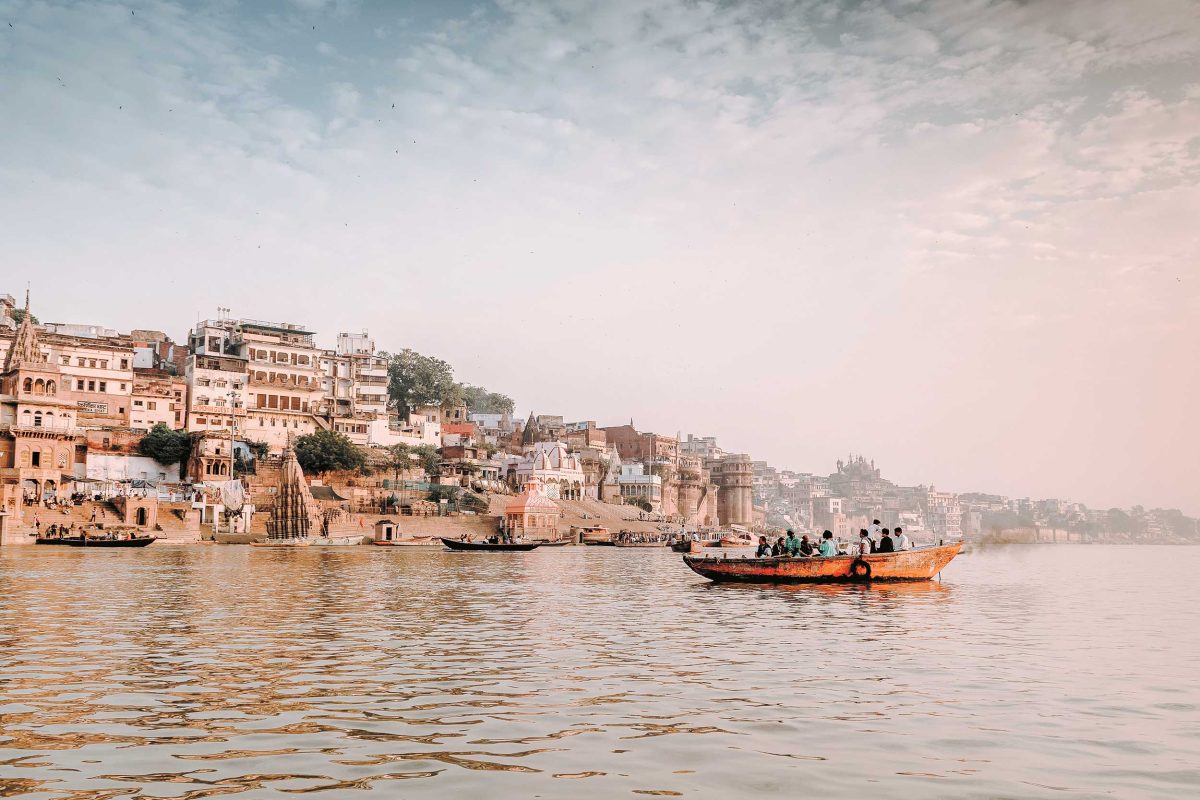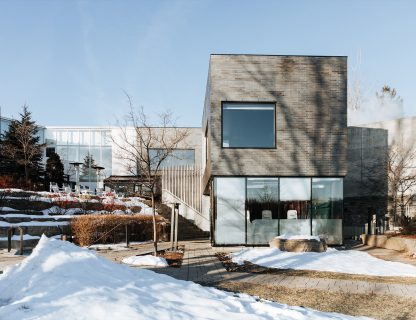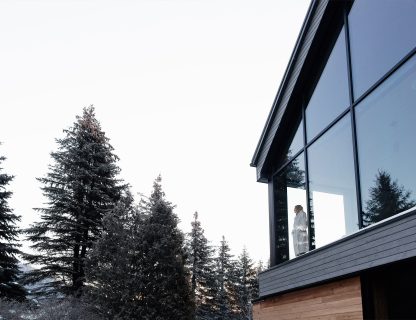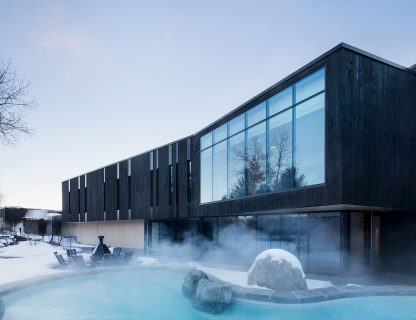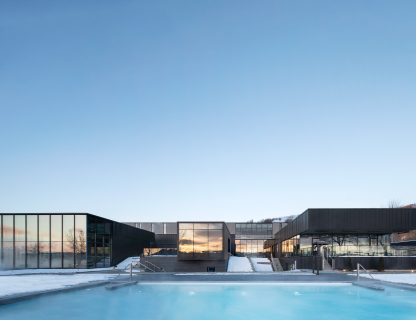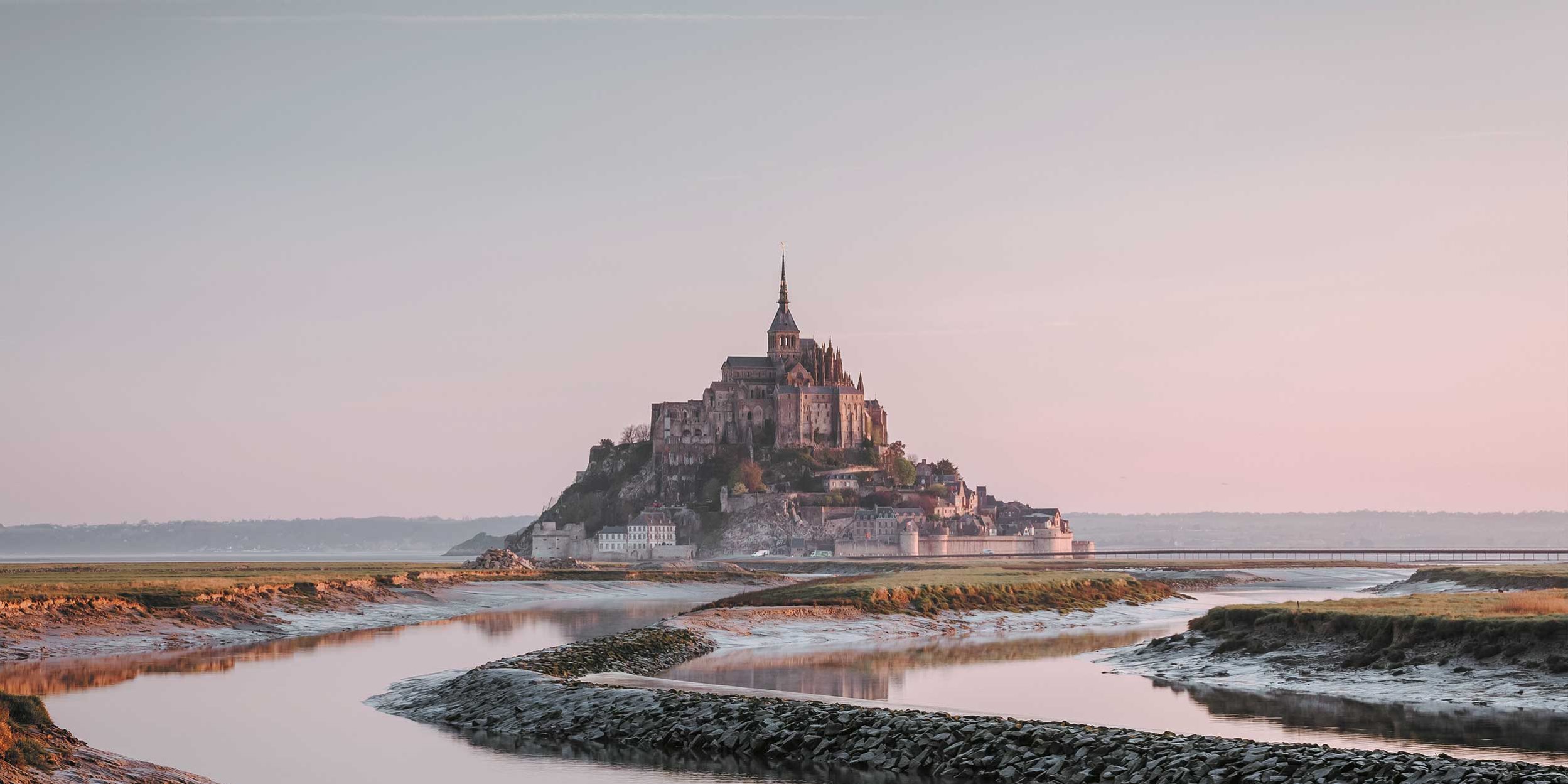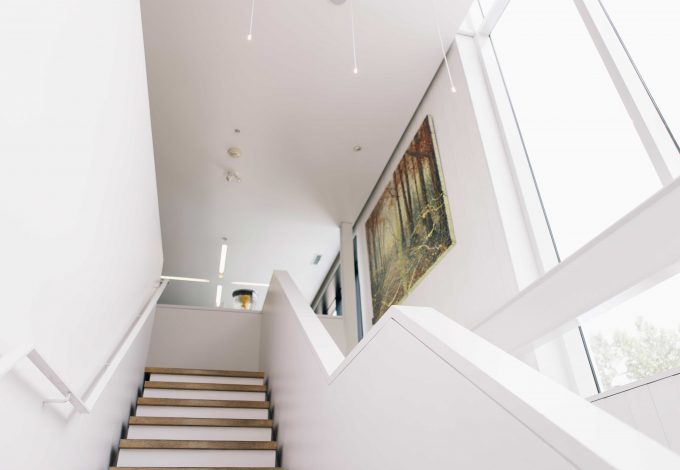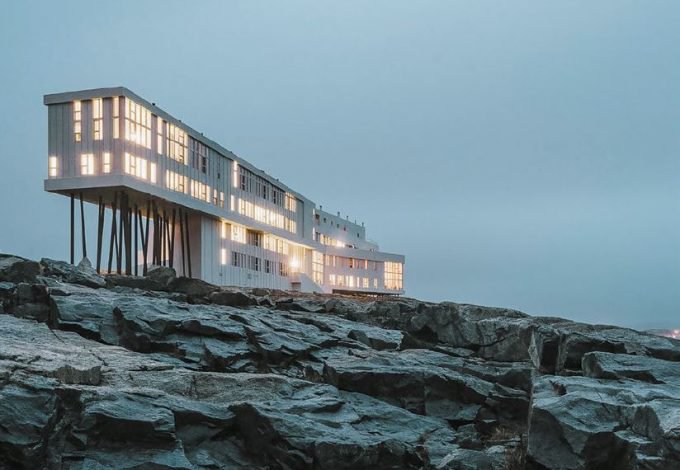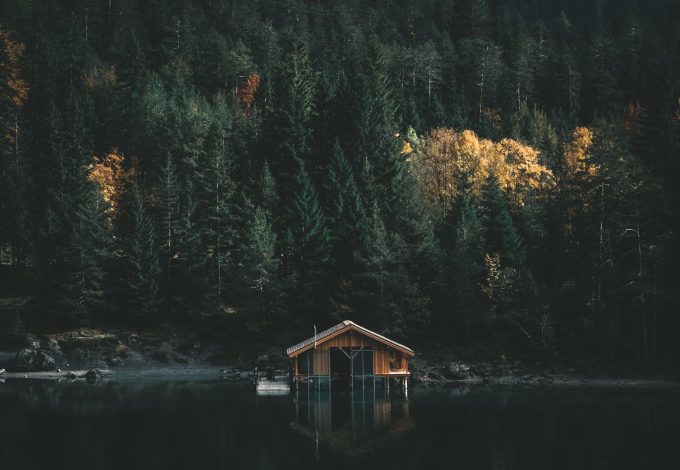AT HOME PORT — In Quebec, we have an intimate, even mystical relationship with water. The river, the back-bone of our living space, is also the lifeline to which we cling. We all have our own piece of river, stream, or lake. It’s an invitation to meditate, a mental coasting, but—above all—a call to escape. An invitation to take to the sea, set sail in a yacht, or survey the globe on the deck of a cargo ship. Rivers and oceans whisk us away to other ports, continents, and cultures that harbour unknown shores. It’s a particularly human characteristic to think of taming the elements, mastering the raging seas. Waves have this unique ability to recharge our batteries, from hotel pools to the beaches where we fill up on sea spray. Life connects us to this essential element; the liquid world invites us to ride the waves. In three stages, let’s explore water and travel, from Africa to the Ganges, passing though the streets of Rome.
TO THE SOURCE
Water is the source of everything. It gets everywhere: fjords, channels, deltas. It shapes the planet at its own pace, inexorably. It makes its way through and surrounds immersed lands. We’re nothing but helpless spectators to this indomitable element. First, we’re blissful in the face of its power at the Yellowstone geysers, then static before the spectacle of the tide at Mont-Saint-Michel. We dive into its heart sometimes, trying to unravel the mystery of this world of silence. Often, we isolate ourselves within it to forget and regenerate.
While sailing the mythical Okavango Delta in Botswana, the flow of life comes to carry us away. Its waters spread out into an aquatic labyrinth of breathtaking beauty. Untouched islands on a sea of water lilies, reeds, papyrus, green water palm trees, and canoes that glide slowly through the water. In the evenings, you can hear the leopards growling and the buffalo rubbing against the posts of the camps on stilts. In a mokoro, a delicate canoe manoeuvred by a long pole, let yourself be carried along flush with the water, vulnerable and fascinated, between lagoons of flowering water lilies. Look out for crocodiles, as well as the colourful kingfishers flitting about from one papyrus to the next. On the banks, watch the Lechwe antelope run and the baboons play. The eye wanders, the horizon melts away, and the vast sky hung like a sheet is pierced by the flight of the white egrets. We’d love to freeze time, but contrary to appearances, here too, it follows its course…
WHEN WATER SHAPES CITIES…
From lakeside villages to floating cities, the urban relationship between humans and water is eternal. Everyone wants to find their home port, from the canals of Bruges to the waves lapping against the red bricks of the Port of Hamburg, to the ancient village of Fort Cochin in Kerala. Misery and grandeur stand beside the same waves, from the palaces of Lake Como to the houses on stilts of Kampong Ayer.
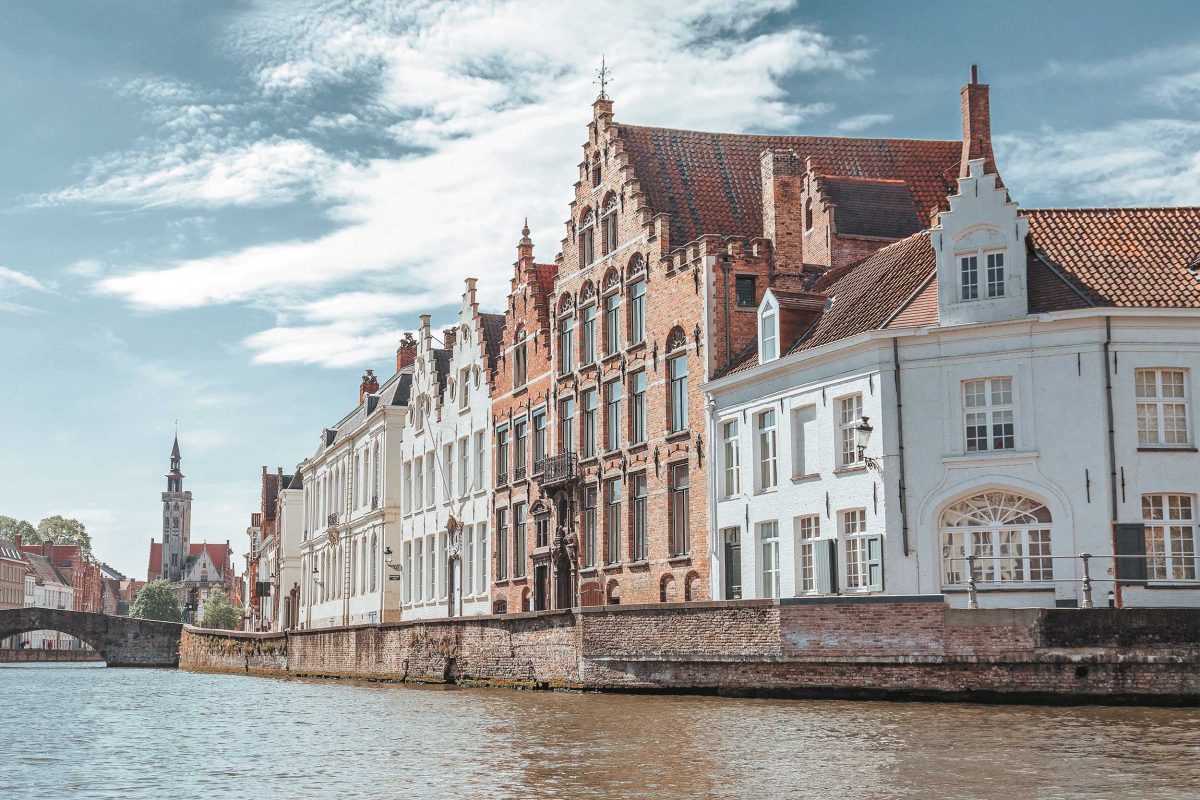
Across Europe, people have made water the quintessential urban decoration. The invigorating fountains are like relays, embellishing both small villages like Raon-l’Étape in the Vosges and large cities like Rome, the Eternal City.
A true city of water, the Italian capital boasts no fewer than 2,000 fountains! Cinegenic or lucky charms, many of them also tell a part of Roman history. It was the Ancient Romans—whom the waters of the Tiber weren’t enough to cool—who came up with the idea of installing fountains. More than three centuries before Christ, statesman Appius Claudius Caecus built the first aqueduct to bring water to Rome from the springs beyond its walls.
The history of the city is therefore written through the fountains—and we walk from one to the next, in search of the cooling mist. But if there’s one fountain in Rome that embodies the city and draws crowds, it would be the Trevi Fountain. You have to go beyond the spectators to truly appreciate its beauty: very early, or at dusk, once everyone has left after taking a picture and throwing a coin in the basin, honouring the tradition and promising to return. In the middle sits the god Neptune surrounded by seahorses and two other statues: allegories of Health and Abundance. To cinephiles, the image of this monument gives rise to another: that of Anita Ekberg, slipping in fully dressed in the moonlight, facing a charmed Marcello Mastroianni. This iconic scene from Fellini’s La Dolce Vita (1960) fully affirms the fountain’s romantic potential. If, as the saying goes, all roads lead to Rome, the fountains of the Eternal City extend far beyond Italy’s borders to open up to the world, taking the souls of travellers with them.
…AND TAMES SOULS
From the waters of the Jordan welcoming the baptizedto the purifying ablutions at the entrances to mosques, water is a receptacle for our souls. What if drawing closer to God involved connecting with water, the quintessential comforting element? In Malaysia, the mosques float on the sea: praying takes place on the water. At Mont-Saint-Michel, the pilgrim’s access depends on the tide: nature subjects us to its whims, and this idea of inaccessibility fascinates us. In India, this mystical connection with water is perhaps at its most intense.
The Ganges: the sacred river. Nestled against an elegant curl of the left bank of the Ganges, the city of Varanasi experiences an intense relationship with heaven. Here, the story of India unfolds in a chaos of colours, smoke, incantations, bustling crowds, sacred mantras, feverish glances, and tears as well. Knocking on Shiva’s door means agreeing to lose your bearings and discovering an elsewhere you didn’t know existed until then. Once in their lifetime, every Hindu must bathe in the Ganges in Varanasi. The purpose? To wash away all these sins that perpetuate in the cycle of reincarnation, the samsāra, in the worlds of matter and imperfection, and therefore suffering. To achieve moksha (the equivalent of nirvana for Buddhists), the end of these damned resurrections, the river and Varanasi, founded over 2,500 years ago, are the solution.
On one hand, there is life. Singles, whole families, young couples—everyone performs careful ablutions. Throwing offerings and loose flowers into the current goes without saying, as does taking a dip to stretch your legs or coating yourself with the precious water. A joyful or collected atmosphere: yogis in full meditation, children splashing about. A herd of black buffalo join the crowd, saris of all colours spread out everywhere, and allis well.
And on the other hand, there is death. Varanasi is a much sought-after final journey. The body moves from the stretcher to the top of the pyre. All that remains are ashes, delivered to the waters of the river. The family’s joy is as extreme as it is sincere. Here is their deceased freed from their required rebirths, finally admitted into the state of full light with the masters of celestial harmony. Mission accomplished for a final journey to Varanasi.
